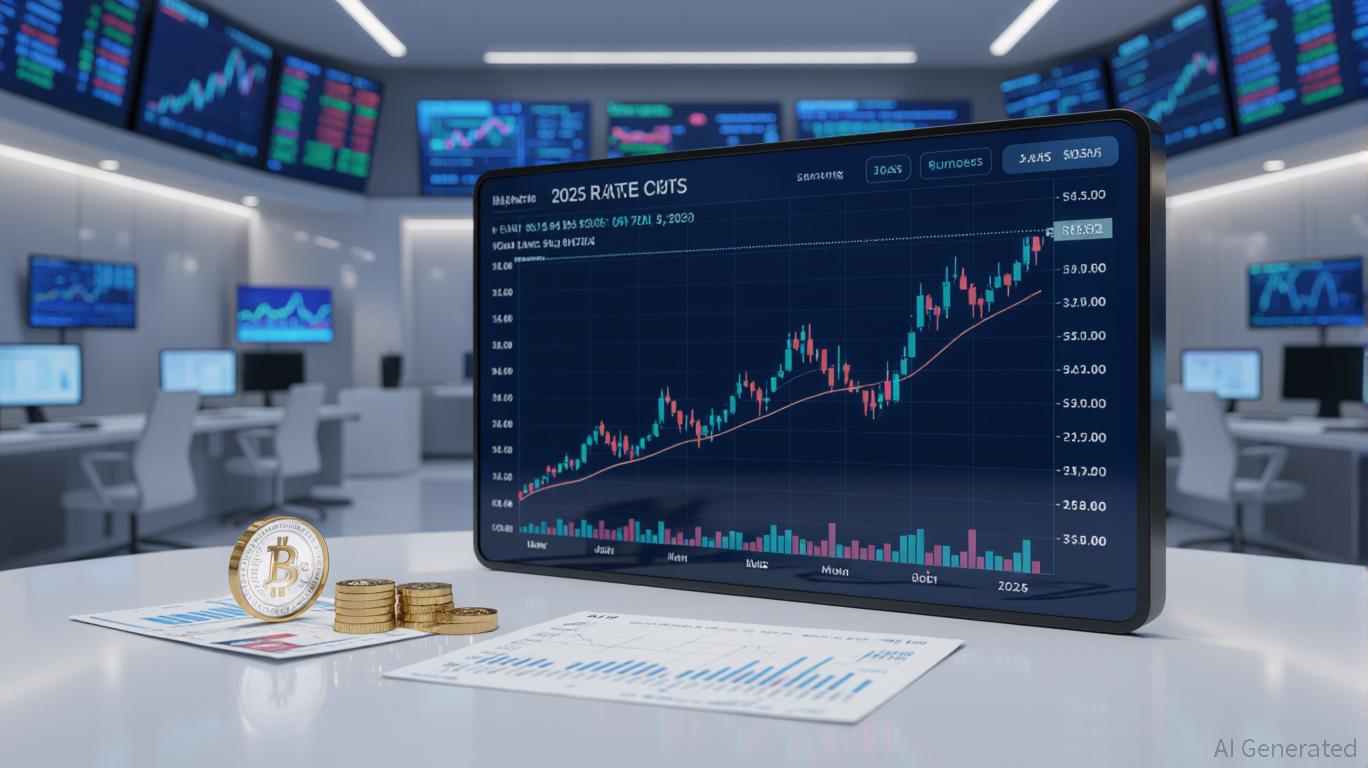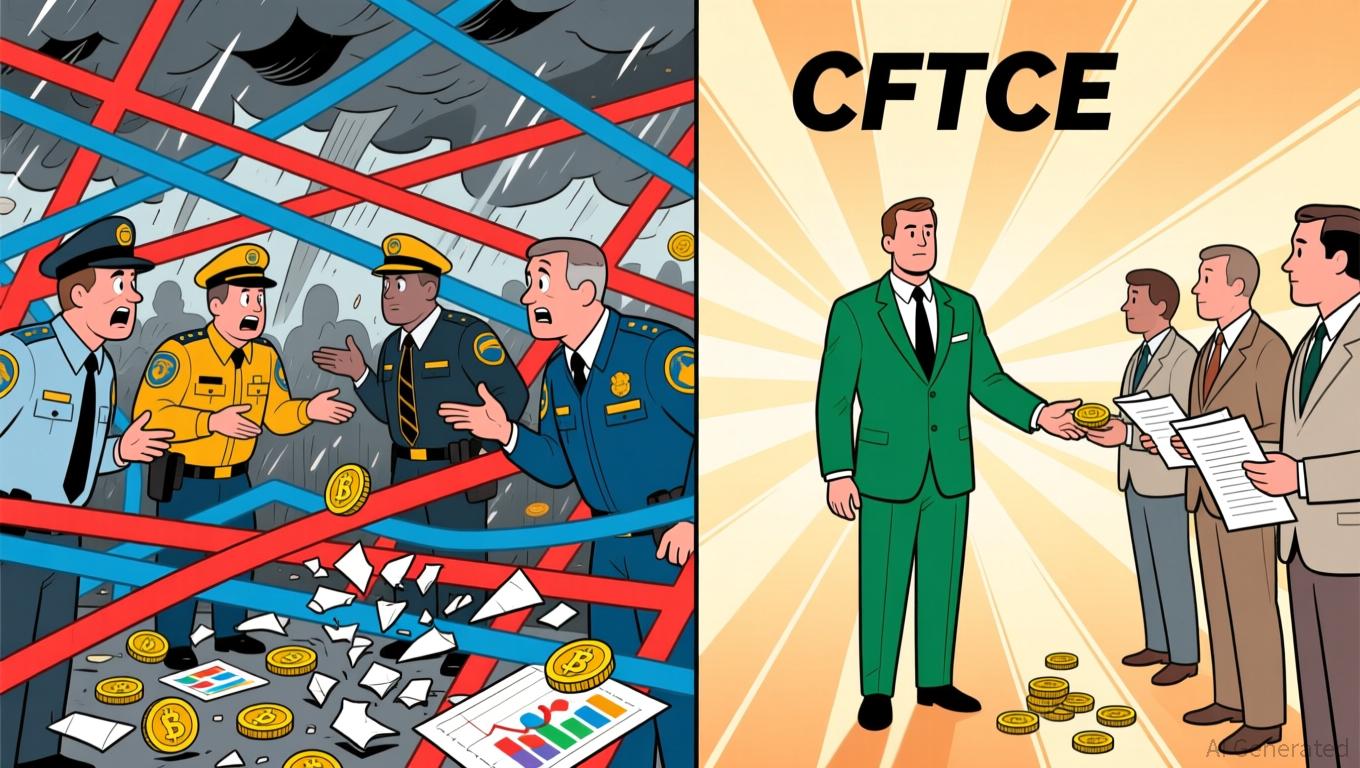Fed Policy Changes and Their Ripple Effects on Solana (SOL): A Macro Perspective on Altcoin Price Fluctuations and Opportunities for Institutional Investors
- Fed's 2025 policy shifts-sparking $35B/month Treasury purchases and 3.75-4.00% rate cuts-boosted Solana's institutional appeal via liquidity injections. - Bitwise Solana ETF raised $417M in debut week, leveraging Solana's 3,800 TPS speed and $10.3B DeFi TVL to attract yield-seeking capital. - 20% Solana price corrections post-Fed cuts failed to deter $2.1B inflows, highlighting institutional strategies using macroeconomic signals and dynamic risk frameworks. - Solana's 0.9 gold correlation and -0.2 S&P 5
Fed Policy and the Liquidity-Driven Bull Run
The Federal Reserve’s move to restart quantitative easing in early 2025—committing to $35 billion in monthly Treasury purchases—marked a significant departure from its previous tightening cycle. By dropping the federal funds rate to a range of 3.75–4.00% and bringing yields down from 4.8% to under 4.1%, the Fed injected fresh liquidity into global markets, which in turn boosted risk appetite, as noted in a
Institutions took advantage of these conditions, with the Bitwise Solana Staking ETF (BSOL) attracting $417 million in its first week and offering a 7% annual yield, as reported by Bitget. This reflects a broader pattern: as the Fed’s supportive stance lowered the opportunity cost of holding non-yielding assets, Solana’s ecosystem—with 3,800 TPS, $10.3 billion in DeFi TVL, and a 300% annual increase in monthly active addresses—became increasingly attractive to yield-focused investors, according to the Bitget report.

Strategic Entry Points and Risk Management Frameworks
Institutional investments in Solana have been carefully timed to coincide with Federal Reserve announcements and key macroeconomic data. For instance, after the October 2025 rate cut led to a 20% drop in Solana’s price, inflows into Solana-related products reached $2.1 billion over nine weeks, surpassing
Additionally, Solana’s integration with traditional finance—such as Visa’s stablecoin settlement system and R3 Corda’s $17 billion RWA bridge—has further increased its appeal to institutional players, according to the Coinotag analysis. These advancements are in line with the Fed’s broader push for financial innovation, exemplified by the proposed shift from gold to Bitcoin reserves, which points to a growing acceptance of digital assets in national financial strategies, as reported by Bitget.
Case Studies: Post-Fed Policy Entry Points
The introduction of US spot Solana ETFs in late October 2025 is a prime example of institutional timing. Despite a 20% price drop in the week before November 5, 2025, the Bitwise Solana ETF secured $417 million in its opening week, according to a
Risk management strategies have also become more sophisticated. Institutions are now using AI-powered tools and liquidity stress tests to adapt to Fed rate changes, according to a
Conclusion: A Macro-Driven Future for Solana
The Federal Reserve’s 2025 policy changes have transformed Solana’s position within the crypto sector. By merging technical scalability, robust institutional infrastructure, and favorable macroeconomic conditions, Solana has become a cornerstone for investors seeking yield in a post-tightening era. As the Fed continues to navigate the balance between inflation and economic growth, institutional entry points will depend on real-time liquidity trends, regulatory developments, and Solana’s expanding real-world use cases. Ultimately, Solana’s trajectory is shaped not only by its technology but also by the global economic forces guiding capital flows.
Disclaimer: The content of this article solely reflects the author's opinion and does not represent the platform in any capacity. This article is not intended to serve as a reference for making investment decisions.
You may also like
Bitcoin News Update: Trump's Pause on China Tariffs Triggers Worker Protests Over Future of U.S. Shipyards
- Trump administration suspends China tariffs on shipbuilding imports, drawing labor union criticism over domestic industry risks and worker refunds. - 175 H-1B visa abuse investigations reveal $15M+ potential refunds, as unions warn of wage suppression and corporate favoritism in trade policies. - Square enables Bitcoin payments for 4M U.S. merchants, advancing crypto adoption while Trump dismisses inflation concerns and vows meatpacking crackdowns.

Bipartisan Legislation Assigns Crypto Regulation to CFTC to Clarify Oversight Uncertainty
- U.S. lawmakers propose shifting crypto regulation from SEC to CFTC via a bipartisan bill, reclassifying most digital assets as commodities. - The draft aims to resolve regulatory ambiguity stifling innovation, building on stalled House CLARITY Act efforts during the 38-day government shutdown. - Market optimism surged as shutdown relief pushed Bitcoin above $105k, with ETF outflows persisting amid anticipation of clearer CFTC-led oversight. - Critics warn of CFTC resource constraints, while proponents hi

Solana News Update: DevvStream Invests in SOL Despite $11.8M Deficit, Shows Strong Confidence in Sustainable Blockchain Prospects
- DevvStream Corp. (DEVS) disclosed holding 12,185 SOL and 22.229 BTC, staking SOL for 6.29% annualized yield amid a $11.8M fiscal 2025 loss. - The company launched a digital asset treasury via BitGo/FRNT Financial, securing $10M liquidity from a $300M convertible note facility. - Plans include a 2026 tokenization platform for carbon credits and Solana staking, aligning with its de-SPAC/Nasdaq listing strategy. - Despite crypto market outflows, DevvStream's staked SOL attracted inflows, contrasting broader
ALGO Falls by 2.28% Over 24 Hours as Short- and Long-Term Performance Shows Mixed Results
- ALGO dropped 2.28% in 24 hours to $0.1844, contrasting with 17.29% weekly and 4% monthly gains but a 44.84% annual decline. - Traders monitor ALGO's resilience amid macroeconomic shifts, though long-term bearish trends highlight structural challenges. - Key support at $0.18 could trigger bullish momentum if held, while breakdown risks further declines toward $0.15. - A backtest analyzing 15% single-day spikes aims to assess ALGO's potential for sustained gains or pullbacks post-rallies.